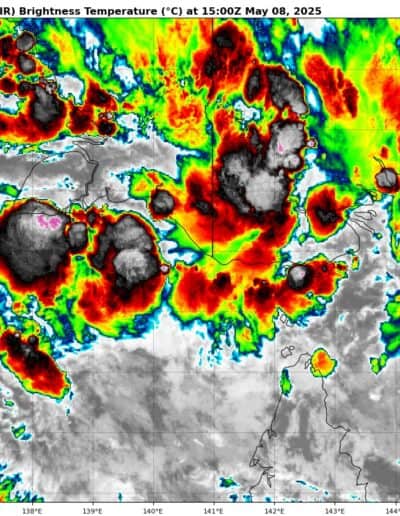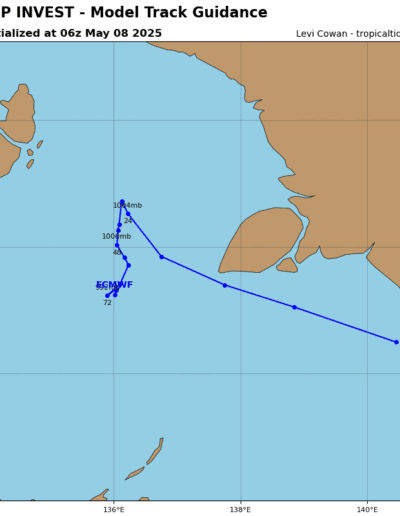Current Snapshot
For all the latest updates visit: DisasterAWARE
By PDC’s Senior Weather
Specialist Glenn James

The Pacific Disaster Center’s (PDC Global) Thursday, May 8, 2025, Tropical Cyclone Activity Report…for the Pacific Ocean, the Indian Ocean, and adjacent Seas
Current Tropical Cyclones:
There are no Tropical Cyclones
Northeast Pacific Ocean: There are no Tropical Cyclones
The last regularly scheduled Tropical Cyclone Activity Report of the 2024 eastern North Pacific Hurricane Season has been issued. Routine issuance of this section of the PDC product will resume on May 15, 2025. During the off-season, Special Tropical Weather Outlooks will be issued as conditions warrant by the NHC.
Central Pacific Ocean: There are no Tropical Cyclones
The 2024 central North Pacific hurricane season has ended. As such, the final routine Tropical Cyclone Activity Report for the 2024 season has been issued. Routine issuance of this section of the PDC product will resume on June 1, 2025. During the off-season, Special Tropical Weather Outlooks will be issued as conditions warrant by the CPHC.
Western Pacific, Indian Ocean, and adjacent Seas: There are no Tropical Cyclones
Southwest Pacific Ocean
>>> There’s an area of disturbed weather being referred to as Invest 93P, which is located approximately 228 NM north-northeast of Gore AP, Nhulunduy, Australia
Animated enhanced infrared satellite imagery (eir) depicts an obscured low level circulation center (llcc), slowly consolidating under organizing convection. Another image shows a swath of 20-25 knots winds to the south.
Environmental analysis reveals favorable conditions for development with low vertical wind shear (vws) of 10-15 knots, good poleward upper-level outflow and warm sea surface temperatures (sst). Furthermore, a point source directly over the analyzed position reveals robust divergence aloft that is clearly evident in the animated eir loop.
Deterministic and ensemble models are in good agreement that 93P will continue to track generally westward over water, then remain near the Arafura Sea and slowly develop over the next 24-36 hours.
Maximum sustained surface winds are estimated at 20 to 25 knots.
The potential for the development of a significant tropical cyclone within the next 24 hours is upgraded to medium.

